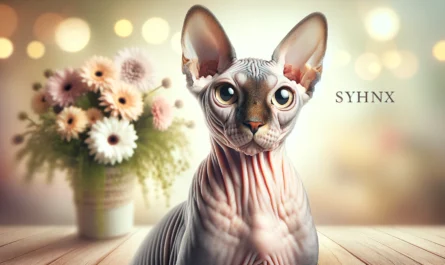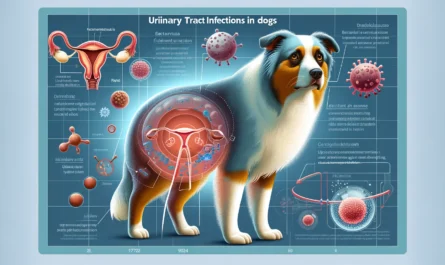Introduction to Feline Infectious Peritonitis
Overview of FIP
Feline Infectious Peritonitis (FIP) is a severe and often fatal viral disease that affects cats. It is caused by a mutation of the feline coronavirus (FCoV). In which can transform from a relatively harmless intestinal virus into a lethal form. This transformation and the disease it causes are complex. It has affecting various body systems and leading to a wide range of symptoms. FIP is notorious for its unpredictability and the challenge. It presents in diagnosis and treatment, making it a significant concern for cat owners and veterinarians alike.
Importance of Recognizing FIP Symptoms
Early recognition of FIP symptoms is crucial due to the disease’s rapid progression and high mortality rate. Understanding the early signs can lead to a quicker diagnosis, allowing for prompt care and, in some cases, treatment that may extend the quality. The duration of life for the affected cat. Recognizing FIP symptoms is also important for managing the spread of the virus in multi-cat environments, as FCoV is highly contagious. Knowledge of the symptoms, coupled with immediate veterinary consultation, can make a significant difference in outcomes for cats suspected of having FIP.
Understanding Feline Infectious Peritonitis
What is FIP?
Feline Infectious Peritonitis (FIP) is a severe and often fatal viral disease that affects cats. It is caused by a mutation of the feline coronavirus (FCoV), which can transform into a version that attacks the cat’s body, leading to FIP. The disease is complex and can manifest in two forms: ‘wet’ (effusive) and ‘dry’ (non-effusive), each with its own set of symptoms. FIP is known for its high mortality rate, making early detection and understanding of the disease critically important for cat owners and veterinarians alike.
Causes of FIP in Cats
The primary cause of FIP in cats is exposure to the feline coronavirus (FCoV). However, not all cats exposed to FCoV will develop FIP. The virus usually causes mild, if any, symptoms initially. The mutation of FCoV into a more virulent form that leads to FIP can be influenced by several factors, including genetic predisposition, immune system function, and environmental stressors. Transmission of FCoV occurs mainly through feces, with cat-to-cat contact in close quarters such as shelters or catteries increasing the risk. Understanding these causes and the nature of FCoV mutation is crucial for managing the spread of this disease.
Types of Feline Infectious Peritonitis
Wet (Effusive) FIP
Wet FIP is characterized by the accumulation of fluid within the abdomen or chest, leading to noticeable swelling and discomfort. Cats with this form of the disease may exhibit difficulty breathing, lethargy, and a decreased appetite due to the pressure of the fluid on internal organs. The effusive form progresses rapidly and is often associated with a more severe prognosis. Feline Infectious Peritonitis (FIP) is a complex and often fatal disease affecting cats, caused by a mutation of the feline coronavirus. There are two primary forms of the disease, each presenting with different sets of symptoms and prognoses.
Dry (Non-effusive) FIP
Dry FIP, on the other hand, involves granulomatous lesions forming on various organs, including the kidneys, liver, and brain, without the accumulation of fluid seen in wet FIP. Symptoms of dry FIP are more subtle and can include weight loss, fever, and changes in behavior. This form of the disease progresses more slowly but can be just as fatal as the effusive form.
Differences Between Wet and Dry FIP
The main difference between wet and dry FIP lies in the presence of fluid accumulation in the body cavities, which is a hallmark of wet FIP. In contrast, dry FIP is characterized by the development of lesions on organs, leading to a gradual decline in health. Both forms share some common symptoms, such as fever and lethargy, but the progression and severity of these symptoms can vary significantly. Accurate diagnosis and differentiation between the two types are essential for providing the best possible care and management of the disease.
Symptoms of Feline Infectious Peritonitis
Common Symptoms of Wet FIP
Feline Infectious Peritonitis (FIP) is a challenging disease to diagnose due to its varied and often subtle early signs. Understanding the symptoms can be critical in seeking timely veterinary care for cats. This section focuses on the symptoms associated with the two forms of FIP, wet (effusive) and dry (non-effusive), and highlights the early signs pet owners should be vigilant about. Wet FIP is characterized by the accumulation of fluid in the abdomen or chest, leading to noticeable swelling. Cats may exhibit difficulty breathing, lethargy, and a decreased appetite as the disease progresses.
Common Symptoms of Dry FIP
Dry FIP, while not involving fluid accumulation, presents with a range of symptoms that can mimic other conditions. Weight loss, fever, and anemia are common, alongside eye inflammation and neurological symptoms, such as seizures or coordination problems. The symptoms of dry FIP are more gradual but equally serious, often leading to a prolonged state of illness that can be challenging to diagnose without specific tests.
Early Signs to Watch For
Early signs of FIP can be subtle and easily overlooked. Persistent fever that doesn’t respond to antibiotics, unexplained weight loss, and changes in behavior, such as increased lethargy or decreased appetite, should prompt a veterinary check-up. Additionally, any signs of abdominal swelling or difficulty breathing require immediate attention. Being observant and proactive about these early symptoms can be key to managing this disease effectively.
Diagnosing Feline Infectious Peritonitis
Challenges in Diagnosing FIP
One of the primary challenges in diagnosing FIP is its clinical presentation, which can be similar to other diseases, leading to potential misdiagnosis. The symptoms are often nonspecific, such as weight loss, fever, lethargy, and anorexia, which are common in many feline illnesses. Additionally, there is no single test that can definitively diagnose FIP, complicating the diagnostic process further. Veterinarians must rely on a combination of clinical signs, laboratory tests, and the exclusion of other diseases to make a presumptive diagnosis.
Tests and Procedures for FIP Diagnosis
The diagnosis of FIP involves a series of tests and procedures. Initially, a complete blood count (CBC), biochemistry profile, and serological tests to detect antibodies to the feline coronavirus are performed. However, these tests cannot confirm FIP definitively since they can only indicate exposure to the virus, not the disease itself. Advanced diagnostics, including polymerase chain reaction (PCR) testing of fluid samples and tissue biopsies, are more specific and can provide stronger evidence of FIP. Imaging techniques such as ultrasound and X-rays are also crucial in identifying fluid accumulation or organ abnormalities consistent with the disease.
Treatment and Management of FIP
Current Treatment Options
In recent years, the introduction of antiviral drugs such as GS-441524 and its prodrug, remdesivir, has significantly improved the prognosis for cats with FIP. These medications target the virus directly, helping to reduce the viral replication rate. Treatment durations vary, typically lasting several weeks to months, and require close monitoring by a veterinarian to adjust dosages and manage any side effects. While not officially approved for use in animals in some countries, these antivirals have become the cornerstone of FIP treatment due to their high efficacy rates in clinical trials and practice.
Supportive Care for Cats with FIP
Supportive care is crucial in managing FIP and includes a range of interventions designed to keep the cat comfortable and address the symptoms of the disease. This includes fluid therapy to address dehydration, especially in cases of the wet form of FIP, which is characterized by the accumulation of fluid in body cavities. Nutritional support is also vital, as cats with FIP may experience decreased appetite; thus, highly palatable, energy-dense foods are recommended. Pain management, typically with anti-inflammatory drugs, helps to reduce discomfort associated with the disease. Additionally, regular monitoring of blood parameters is essential to assess the cat’s response to treatment and adjust care as needed.
Prevention and Control of FIP
Strategies to Reduce the Risk of FIP
Reducing the risk of FIP requires a comprehensive understanding of its transmission and progression. One key factor is minimizing exposure to the causative virus, which involves maintaining a clean living environment and avoiding overcrowded conditions. Regular disinfection of surfaces, along with the use of separate feeding and litter areas, can help prevent the spread of the virus. Additionally, isolating new or sick cats from the general population can control the spread of infections.
Importance of a Healthy Environment
A healthy environment plays a crucial role in the prevention of FIP by bolstering a cat’s immune system and reducing stress, which is known to exacerbate the risk of disease. This involves providing a balanced diet, ensuring cats have enough space and enrichment activities, and maintaining a calm and stable atmosphere. Stress reduction is particularly important in shelters and multi-cat households, where the close proximity of animals can increase the spread of infectious agents and stress-related immunosuppression. By focusing on these aspects, cat owners and caretakers can significantly decrease the likelihood of FIP occurrence and promote overall feline well-being.
Living with a Cat Diagnosed with FIP
Coping Strategies for Pet Owners
When your cat is diagnosed with FIP, the initial shock and emotional turmoil can be difficult to manage. Connecting with online communities or local support groups of pet owners facing similar situations can also provide comfort and practical advice. Educating yourself about the disease helps in making informed decisions about your cat’s health. It’s also essential to take care of your own mental health during this time, considering professional counseling if needed to process your emotions and cope with the stress of caregiving.
Quality of Life Considerations
Ensuring a high quality of life for a cat with FIP involves regular monitoring of their symptoms and adjusting care as necessary. Pain management, nutritional support, and maintaining hydration are fundamental aspects of care. Create a comfortable and stress-free environment for your cat, with easy access to cozy resting places, litter boxes, and their favorite toys. It’s also important to continue engaging in gentle play and affection to strengthen your bond and provide emotional support. Regular check-ins with your vet are crucial to assess the progression of the disease and adapt the care plan to meet your cat’s changing needs. Remember, the goal is to maximize comfort and happiness for your cat in their remaining time.
FAQs on Feline Infectious Peritonitis (FIP) Symptoms
Q. What is Feline Infectious Peritonitis (FIP)?
A. FIP is a viral disease that affects cats, caused by a mutation of the feline coronavirus. It leads to an inflammatory reaction in the body’s tissues.
Q. Are there different types of FIP?
A. Yes, there are two main types: wet (effusive) FIP and dry (non-effusive) FIP. Each type presents different symptoms.
3. What are the symptoms of wet FIP? Wet FIP symptoms include abdominal swelling due to fluid accumulation, difficulty breathing if fluid is in the chest, and lethargy.
Q. What are the symptoms of dry FIP?
A. Dry FIP symptoms are more varied but can include weight loss, fever, lethargy, and eye inflammation. Neurological symptoms like seizures may also occur.
Q. How quickly do FIP symptoms appear?
A. Symptoms can develop suddenly, especially in the wet form, or gradually over weeks to months in the dry form.


